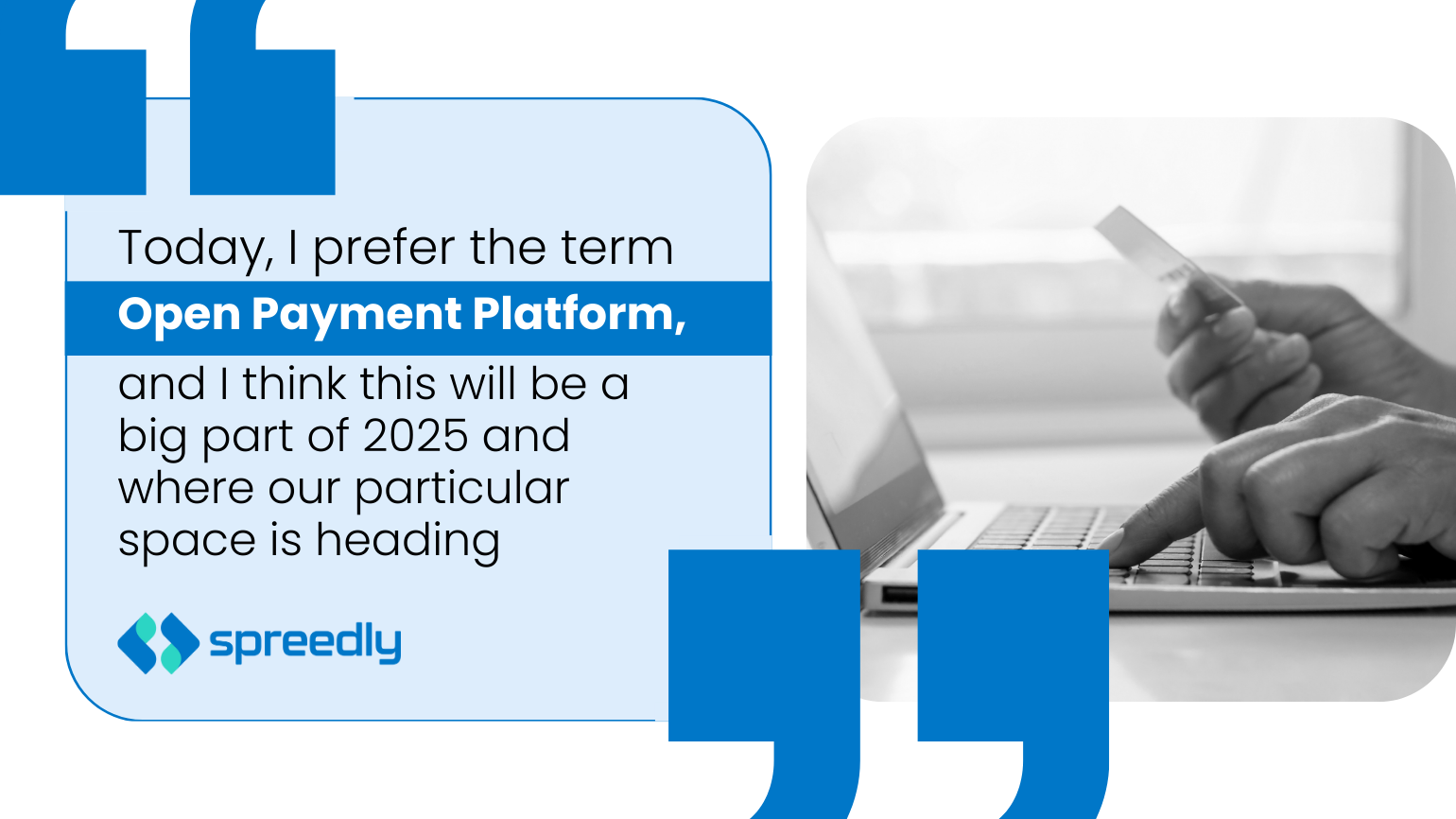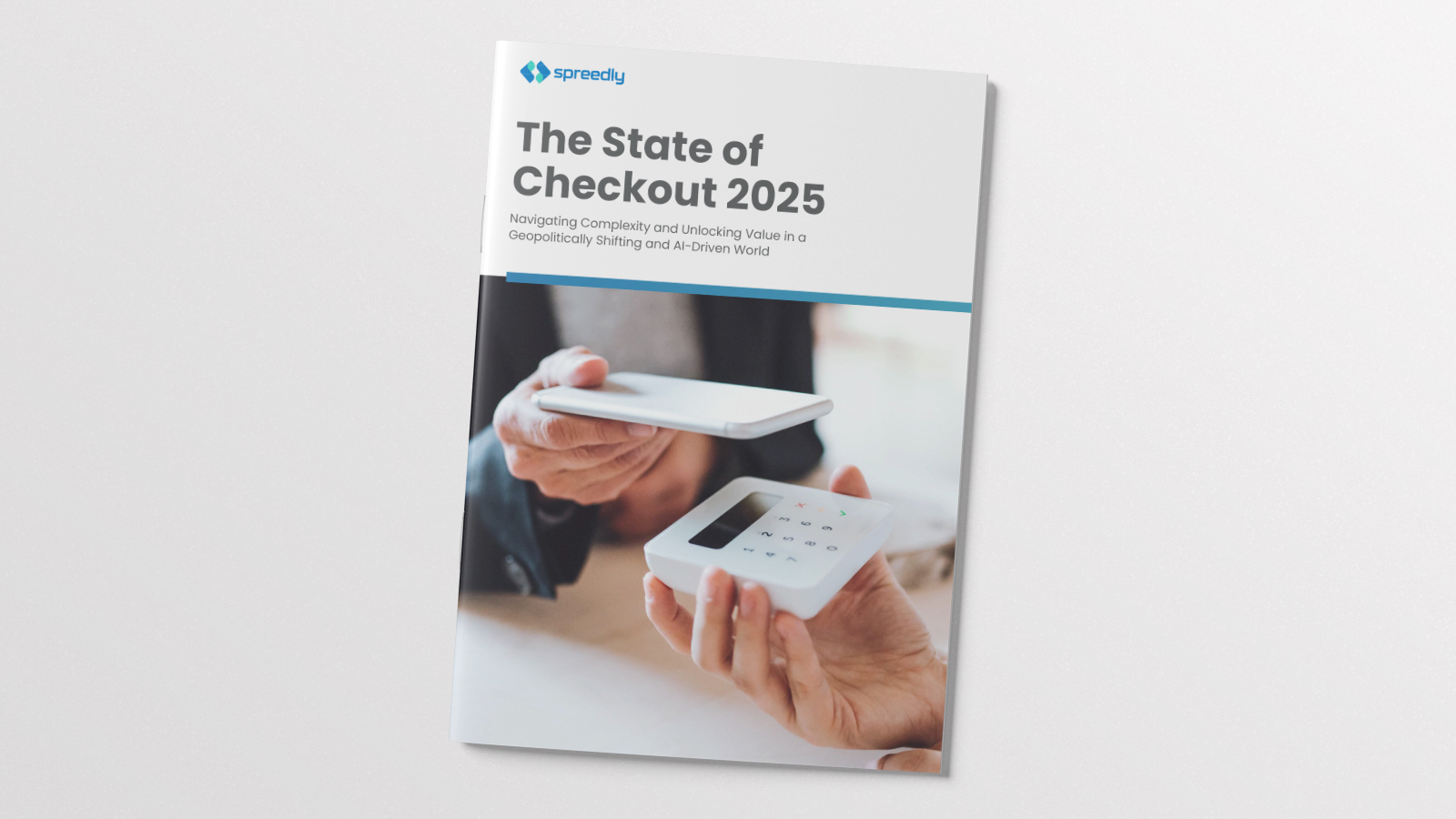
In our early years, I was often asked, 'What is Spreedly? Why do you exist?' We were the first in our space (although one could argue that if you’re the only one doing something, is it a space?) so we received that question often.
Therefore, when the concept of Payment Orchestration was introduced, we jumped on board and helped evangelize the term and increase its popularity — it provided a clear way to define and frame our mission. However, the term became very popular quite quickly, which had the opposite of our desired goal - merchants and platforms used the term so broadly that it lost a lot of the value of helping the industry understand where we fit.
One undesirable outcome of the changing definition of Orchestration is that it became used interchangeably with the idea of card payments only and fee arbitrage in particular. For some merchants, that’s extremely important, but that’s also just one reason among many for having an Open Payments Platform. So, this one feature among many began to define the space overall. Payment Orchestration feels limiting when it’s too closely tied to card payments, cost-cutting, and routing optimization. While these are valuable, merchants prioritize pay-ins, payouts, fraud management, geographical reach, Open Banking, chargeback performance, redundancy, and accommodating diverse business units.
Today, I prefer the term Open Payment Platform, and I think this will be a big part of 2025 and where our particular space is heading:

Gone are the days when merchants accepted significant trade-offs from their payment provider in exchange for simply being able to accept digital payments. Merchants seek customization and modularization to maximize global reach, user satisfaction, superior acceptance and pricing performance and reliability. We believe an Open Platform is the superior approach, and we’re busy building and scaling our offering to complement individual PSPs.
The other big theme for 2025 will be the large, global PSPs trying to roll out “Orchestrator light” offerings, driven by three primary concerns. First, they are responding to the same market dynamics of merchants wanting more flexibility and customization. Second, culturally, some PSPs have technology stacks and cultures that favor building in-house over partnering. The third part is probably just a response to the fact that their competitors launched an offering, and they feel the need to respond.

My guess is this will solve some use cases within their existing or new business channels and so will be a constant throughout 2025. By 2026 and 2027, the PSPs will realize that Open Platforms can be their friends and help create happy shared merchants in the same way they view a subscription/e-commerce or other vertical software offerings today. You can’t just put your toe into Orchestration - the requests will continue and will thus create fork-in-the-road decision moments. They’ll become more comfortable partnering with Open Platforms and focusing on their core offerings, in the same way, that regional PSPs are comfortable with working with Open Platforms today, as they understand it’s unrealistic to try and be “All the things” to a Global merchant. (and a shoutout to the global PSPs who are already there today - they tend to be the players who have been in payments the longest, so directionally, I can see where this is heading)
So 2025 will see a broadening of the requirements for an Open Payments Platform, PSPs offering Orchestrator light solutions and the market continuing to come together to serve the most strategic merchants who will demand excellent experiences on Open Payment Platforms and the connected providers.





